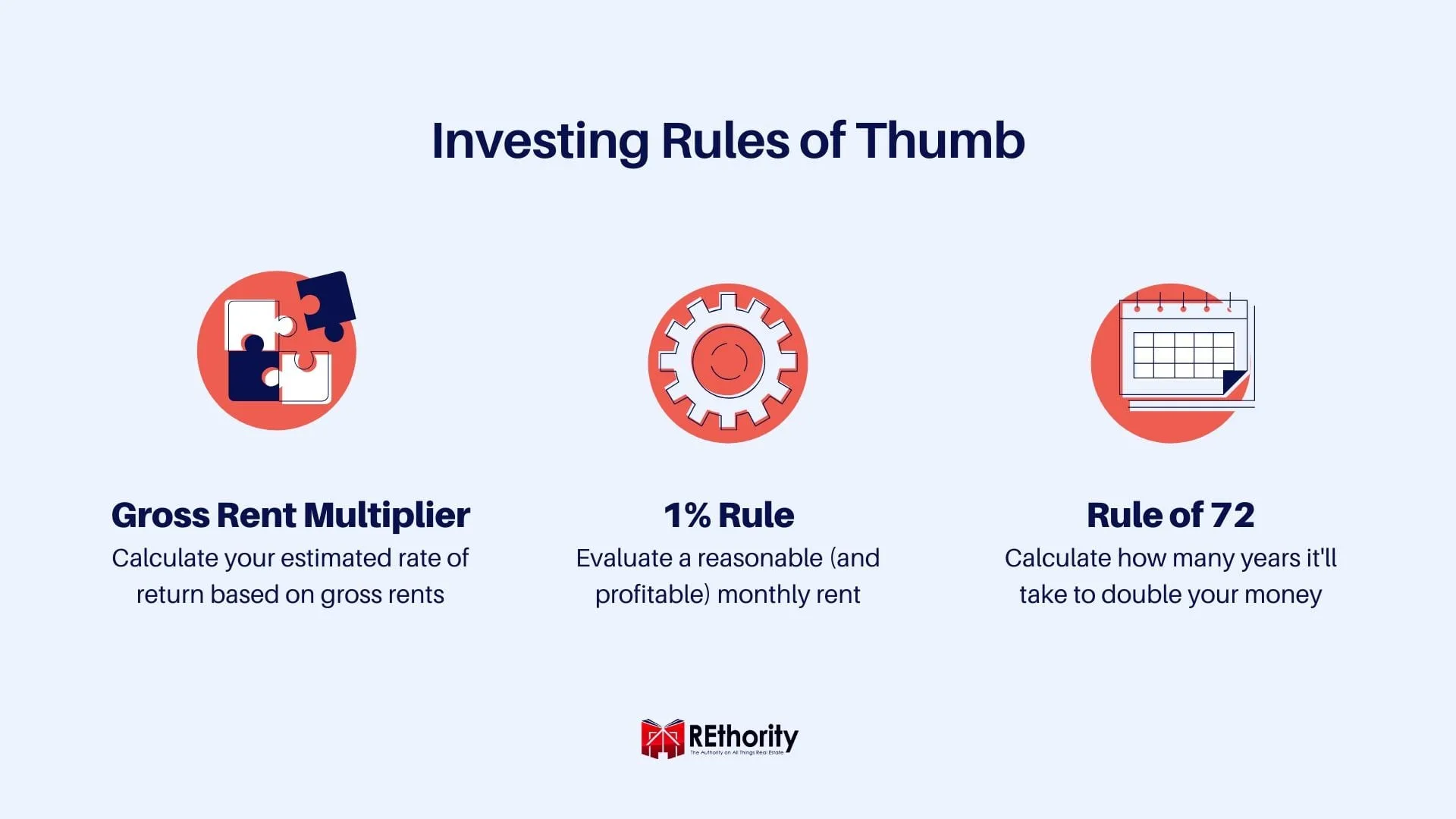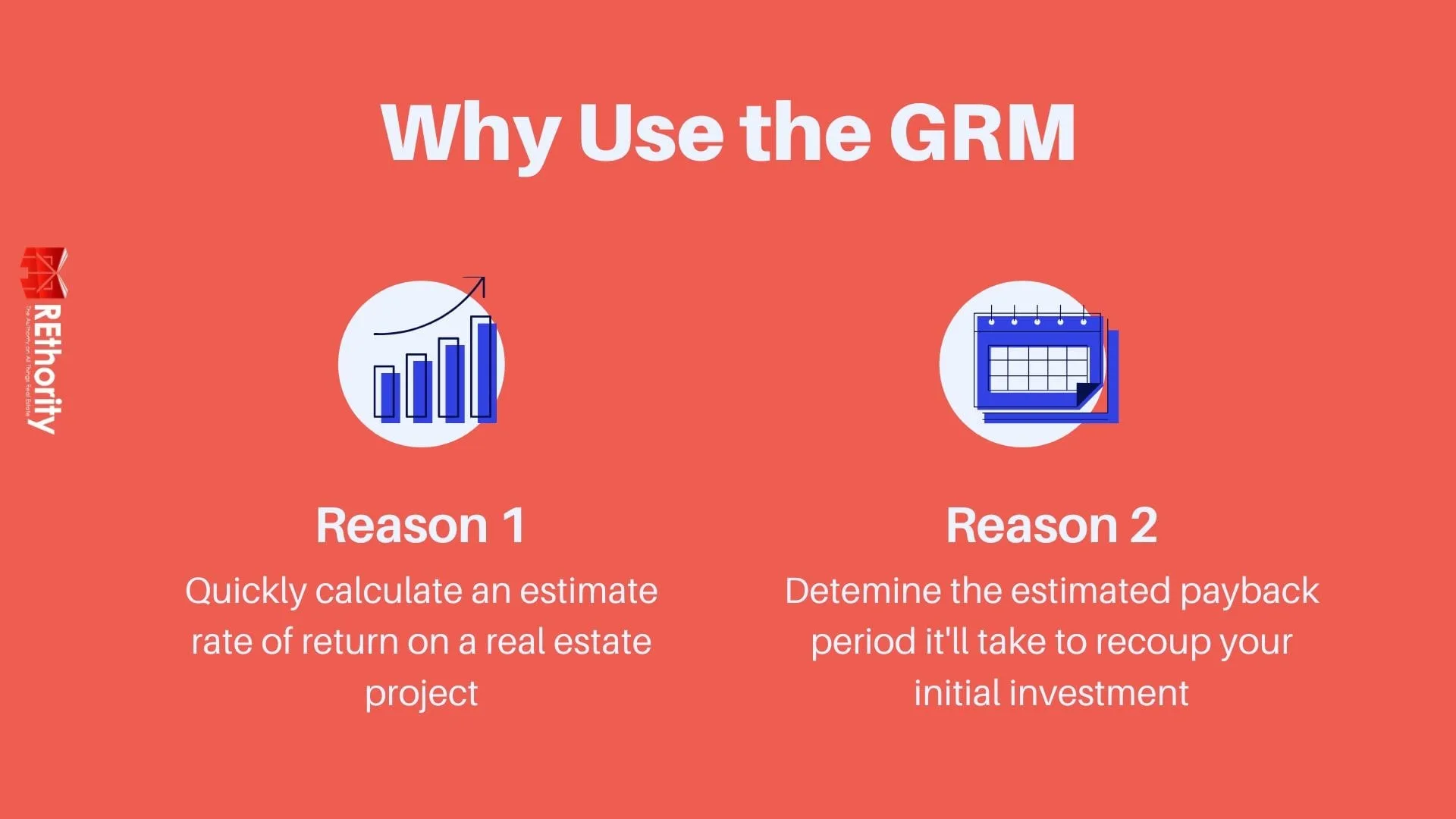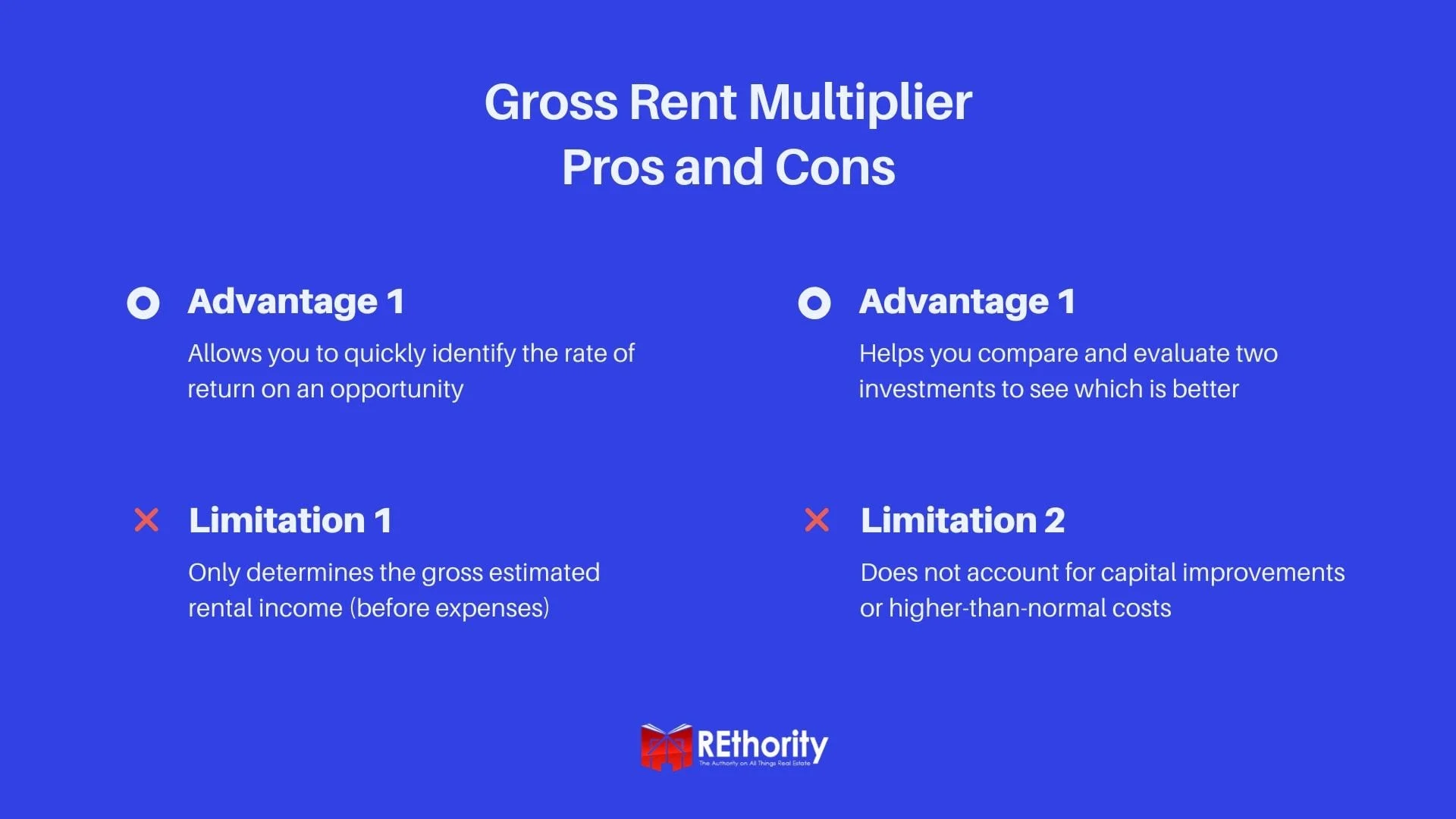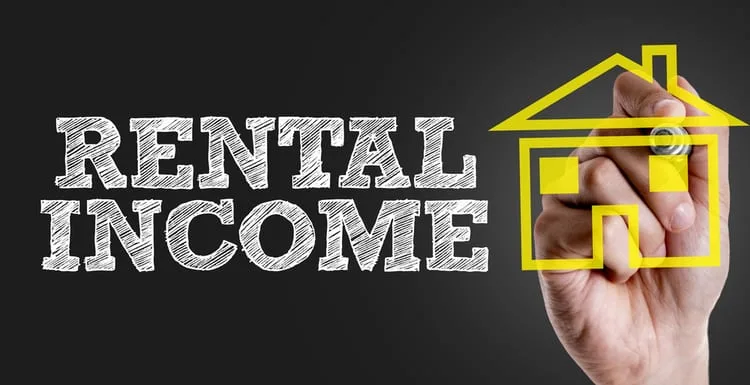The Gross Rent Multiplier is a tried-and-true method of determining a property’s payback period.
But how does it work? And what’s the formula? We’ll cover this and more in our complete guide.
What Is the Gross Rent Multiplier?
Calculating property value and rental income potential over time is one of the most important abilities for a rental property investor to have.
Valuing commercial real estate isn’t as simple as valuing residential real estate. It’s possible to look at comparable properties.

Still, the vast differences in commercial properties, their number of units, tenant occupancy rates, monthly rent, and more mean the rental income a building next door brings in could be a difference of thousands of dollars each year.
This leaves rental property investors with a problem: How can I determine the value of an investment and see what my rental income potential from it will be?
Maybe you’re looking at a range of properties and wondering which is likely to be the most profitable over time. Perhaps you want to know how long it might take for the investment to pay off.
You may wonder how valuable each is compared to properties nearby or what the basic rental income potential is for each. In any case, you need a simple formula to make those estimations.
The Gross Rent Multiplier (GRM) is one formula commonly used by investors. We’ll look at what the GRM helps investors estimate, the GRM formula, a few limitations to the GRM, and why it’s an important tool for investors.
Why Use the GRM
Real estate investors don’t jump at every investment opportunity they come across. Instead, they rely on screening tools that help them make financial sense of each property and how long it will take for their investment to pay itself off before becoming profitable.
The Gross Rent Multiplier is a formula used to do just that. It helps real estate investors calculate an estimate of their rate of return by showing how much gross income they’ll bring in from a specific property.

The GRM gives a numerical estimate of how long (in years) it will take to pay an investment property off and begin making a profit. This is very important when comparing multiple opportunities.
If a property is expensive but doesn’t generate a lot of rental income each year (like, say, a newly built strip mall with one or two tenants), it’s going to have a very high Gross Rent Multiplier.
This high number would show us that you’re going to pay a high price upfront for the property, generate very little income from it over the years, and, as a result, take a long time (if ever) to see a return on your investment.
If another strip mall (established) is being sold cheaply but has every unit rented out, that setup would give you a very low GRM. This would be a sign that the property might make an excellent investment that could start generating returns very quickly.
Only two numbers are needed to calculate a property’s GRM, so you don’t have to have a lot of in-depth information about the property to use this formula. You can quickly screen dozens of properties with this formula to decide which are worth moving forward with.
With these two key numbers, the formula is straightforward to apply. We’ll look at the GRM formula and how to use it next.
The Gross Rent Multiplier Formula
To find the Gross Rent Multiplier, plug the property’s current price (or the fair market value) and the current annual rent information into the following formula:
PROPERTY PRICE / ANNUAL GROSS RENT = GROSS RENT MULTIPLIER
Essentially, you take the overall price you’ll pay for the property and divide it by the amount of rental income you’ll make from it in one year. The numerical estimate this formula provides you with will be a small number (usually somewhere between 1 and 20).
This represents the number of years it will likely take for the property’s gross rental income to pay off the initial cost of the property. It serves as a way to “grade” the property based on its rental potential relative to its overall price.
If you use the GRM formula to evaluate several rental properties, they’ll all be reduced to a simple, manageable number that can help you make a better investment decision. Let’s check out a simple example.
Gross Rent Multiplier Example
You have the opportunity to buy a $500,000 apartment building (Building A) that brings in $80,000 in rent each year. Remember, we’re looking at the gross rent.
This is the amount you make before you pay for property management, repairs, taxes, insurance, utilities, etc. Let’s find the GRM for this property using the simple formula.
Example 1
Building A: $500,000 (PROPERTY PRICE) / $80,000 (ANNUAL GROSS RENT) = 6.25 (GRM)
Using this formula, we can see that this property is likely to take about 6¼ years (6.25) to pay off. The GRM helps us understand how much gross income you’d make from the property every year.
And, therefore, how many years would you need to make that same income to pay the property off and start profiting from your investment?
Example 2
Using this example to work from, let’s say you’re looking at a group of apartment buildings. The other two are on the market for $350,000 (Building B) and $750,000 (Building C).
Building B generates $25,000 in rent annually, while Building C brings in about $45,000 in rent each year. Let’s use the GRM formula to see how Buildings B and C compare with Building A and each other.
- Building A: $500,000 / $80,000 = 6.2 (GRM)
- Building B: $350,000 / $25,000 = 14 (GRM)
- Building C: $750,000 / $95,000 = 7.8 (GRM)
Which investment seems the least profitable from looking at this calculation? Buildings A and C might be of interest, potentially only taking 6 to 8 years to pay off.
But Building B doesn’t generate enough rental income each year to make it an exciting investment—at least when there are other, more profitable properties to consider.
Keep in mind that a higher Gross Rent Multiplier estimate (one that’s around 20 or higher) is likely a poor investment, while a lower GRM (less than 15) is potentially a good investment. As an investor, your goal would be to look for GRMs that aren’t much higher than 15.
At the very least, the GRM can be used as a way to apply the process of elimination to a group of properties you’re considering. In your grouping, which number seems to tower over the others, or do they all seem to hang in the balance?
GRM Limitations and Considerations
The GRM isn’t a perfect way to estimate your rate of return on a rental property, but it gives a vital baseline number to work from.
In any case, it’s important to know about the limitations and considerations that are associated with this formula.

First, this formula uses the annual gross rent, so it doesn’t consider what your operating expenses will be as the property owner. It only looks at the gross, initial amount of cash you’ll have coming in before expenses are paid.
In properties that need a lot of work and repairs, have high property taxes, or require additional insurance (like disaster insurance), your gross rent profits can be quickly eaten away, making your initial estimates unusable.
Another limitation of this formula is that it doesn’t consider how rental income from a property might change over the years.
You might have fewer tenants renting than expected, average rental prices could drop in your area (though that’s not likely), or your cash flow might otherwise be affected.
This formula can’t take that into account because it only looks at the gross income potential over time and, therefore, how long it takes before you see real returns on your investment.
Don’t rely on the GRM to give you a reliable indicator of exactly how much rental income a property will bring you. Instead, you should use it to provide you with an idea of how worthy of your investment a given property is.
Should You Use the GRM?
With a few clear limitations in mind, is the GRM still worth your time as an investor? Absolutely. It’s one of your best options to estimate the investment potential of multiple properties at no cost to you.
Having commercial properties appraised may be the best way to get a solid property value and determine your potential rental income from it. Still, commercial appraisals are time-consuming and very expensive.
You’ll likely pay upwards of $4,000 to have one done. If you need to have more than one property appraised, you could easily sink more than $10,000 into the appraisals, perhaps only to find that they’d be problematic investments.
Why spend thousands on appraisals when you can plug two numbers into a simple formula and get a good idea of how invest-worthy a commercial property is, how long it will take you to pay off, and how much it’s really worth?
The Gross Rent Multiplier formula might be a “quick and dirty” estimation method. Still, it is free to use, fast to calculate, and it can give you an accurate starting point when you’re screening potential investment properties.

